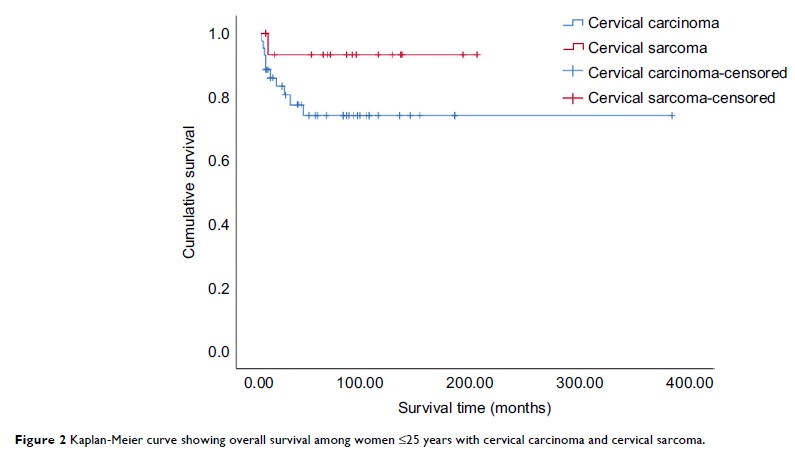100205
论文已发表
注册即可获取德孚的最新动态
IF 收录期刊
- 3.3 Breast Cancer (Dove Med Press)
- 3.4 Clin Epidemiol
- 2.5 Cancer Manag Res
- 2.9 Infect Drug Resist
- 3.5 Clin Interv Aging
- 4.7 Drug Des Dev Ther
- 2.7 Int J Chronic Obstr
- 6.6 Int J Nanomed
- 2.5 Int J Women's Health
- 2.5 Neuropsych Dis Treat
- 2.7 OncoTargets Ther
- 2.0 Patient Prefer Adher
- 2.3 Ther Clin Risk Manag
- 2.5 J Pain Res
- 2.8 Diabet Metab Synd Ob
- 2.8 Psychol Res Behav Ma
- 3.0 Nat Sci Sleep
- 1.8 Pharmgenomics Pers Med
- 2.7 Risk Manag Healthc Policy
- 4.2 J Inflamm Res
- 2.1 Int J Gen Med
- 4.2 J Hepatocell Carcinoma
- 3.7 J Asthma Allergy
- 1.9 Clin Cosmet Investig Dermatol
- 2.7 J Multidiscip Healthc

25 岁或以下女性的宫颈癌: 一项回顾性研究
Authors Kong Y, Zong L, Yang J, Wu M, Xiang Y
Received 18 November 2018
Accepted for publication 27 January 2019
Published 6 March 2019 Volume 2019:11 Pages 2051—2058
DOI https://doi.org/10.2147/CMAR.S195098
Checked for plagiarism Yes
Review by Single-blind
Peer reviewers approved by Dr Andrew Yee
Peer reviewer comments 3
Editor who approved publication: Professor Lu-Zhe Sun
Purpose: The
incidence of cervical cancer in young women is increasing. This study aimed to
analyze the clinicopathological characteristics, treatment, and prognoses of
women aged ≤25 years with cervical cancer.
Patients and methods: Medical
record data of 60 cervical cancer patients aged ≤25 years treated at Peking
Union Medical College Hospital between January 1986 and December 2017 were
reviewed. The overall survival rate was estimated using the Kaplan–Meier
method. Prognosis-related risk factors were analyzed using univariate and
multivariate analyses.
Results: Among the
60 patients, 44 (73.3%) were diagnosed with cervical carcinoma and 16 (26.7%)
with cervical sarcoma. In the cervical carcinoma group, the most common
histology was squamous cell carcinoma (n=22, 50.0%) followed by adenocarcinoma
(n=18, 40.9%). Notably, clear cell carcinoma dominated cervical adenocarcinomas
at 61.1% (11/18). In the cervical sarcoma group, embryonal rhabdomyosarcoma
comprised 50% of the cases (8/16). A total of eleven patients with cervical
carcinoma underwent fertility-sparing surgeries, and the live birth rate
approached 66.7%. The estimated 5-year overall survival rate of the entire
cohort was 79.8% with no statistically significant difference between the
carcinoma and sarcoma groups (74.3% vs 93.3%, P =0.14). Stage (RR
6.71, 95% CI 1.366–32.970, P =0.019) and lymph node metastasis (RR 9.09, 95% CI
1.050–78.732, P =0.045) were independent risk factors for poor
prognosis in those young patients with cervical carcinoma.
Conclusion: Adenocarcinoma
and sarcoma of the cervix comprise the majority of cervical cancer in young
women; their overall prognoses are not worse than older patients; the survival
rates tend to vary widely according to histologic subtypes.
Keywords: cervical
cancer, young women, histologic subtypes, fertility preservation, prognosis
